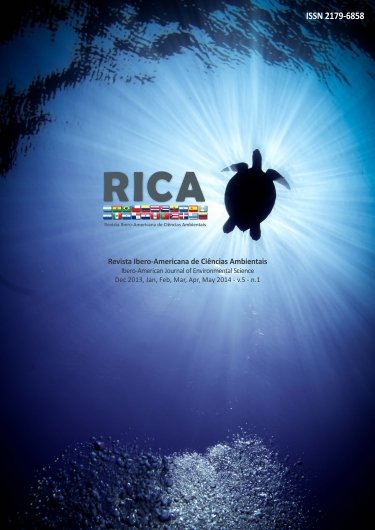Coastal Dunes changes from 1966 to 2001 in the de La Plata River, Uruguay
DOI:
https://doi.org/10.6008/SPC2179-6858.2014.001.0003Palavras-chave:
Acacia longifolia, Coastal Sand Dunes, Invasive Plant Species, Landscape Change, UruguayResumo
Hereby we present a historical reconstruction of the coastal landscape for an area of the dune system of Rio de la Plata in Uruguay. In order to achieve our purpose, we performed an analysis of photographs taken of the area in the years 1966, 1976, 1982, 1987, 1994 and 2001, which were loaded to a geographic data system. For a long period of time we detected an increment and advancement of the vegetation coverage towards the coast. Based on a logistic regression, we inferred a transmission pattern predicting that the system would achieve a maximum of 85% coverage via a model of cyrtoid phenomenon. These results make sense once we consider management plans for the restoration of degraded areas, which have been afforested in the past century with the purpose of disrupting the sand dune dynamics and facilitating urban development. Currently, those areas are densely populated with increasing reports of housing and infrastructure destruction due to beach loss and the invasion of exotic species. Our approach incorporates the historical vision of the landscape as a tool for the restoration of degraded ecosystems, and at the same time proposes certain strategies for the management and control of Acacia longifolia, which constitutes the main exotic species that has invaded and modified the dune system of coastal Rio de la Plata.Downloads
Downloads
Publicado
Edição
Seção
Licença
Copyright (c) 2014 Revista Ibero-Americana de Ciências Ambientais

Este trabalho está licenciado sob uma licença Creative Commons Attribution-NonCommercial-NoDerivatives 4.0 International License.
A CBPC - Companhia Brasileira de Produção Científica (CNPJ: 11.221.422/0001-03) deterá os direitos materiais dos trabalhos publicados. Os direitos referem-se à publicação do trabalho em qualquer parte do mundo, incluindo os direitos às renovações, expansões e disseminações da contribuição, bem como outros direitos subsidiários. Todos os trabalhos publicados eletronicamente poderão posteriormente ser publicados em coletâneas impressas sob coordenação desta empresa e/ou seus parceiros. Os (as) autores (as) preservam os direitos autorais, mas não têm permissão para a publicação da contribuição em outro meio, impresso ou digital, em português ou em tradução.









